|
Location:
Northern
end of Urubambo Valley, Peru.
|
Grid Reference:
13�
15' S, 72� 16' W. |
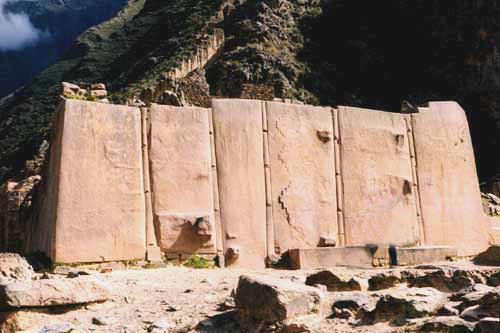
 Ollantaytambo:
(Pre-Inca Mountain Citadel).
Ollantaytambo:
(Pre-Inca Mountain Citadel).
A Pre-Inca fortress, with
rock walls of tightly fitted blocks weighing over 50 tons each.
Most of the blocks consist of (Andesite)(9),
(Red
Porphyry)(1),
the quarries for which are situated on a mountaintop seven miles distant. As
well as the difficulties that must have been experienced in dressing the
stones, they had to be lowered down one mountain, over a river canyon with
1000 ft sheer rock walls, then raised up the mountain the complex is
situated on. (9).
(Click here for map of the site)
|
Ollantaytambo (Ollantiatambo): |
Ollantaytambo is a Pre-Inca fortress, with
rock walls of tightly fitted blocks weighing upto 150 tons each. Most of the
blocks consist of (Hard Andesite)(9),
(Red Porphyry)(1), the quarries
for which are situated on a mountain-top a few miles distant. As well as the
difficulties that must have been experienced in dressing the stones, they
had to be lowered down one mountain, over a river canyon with 1000 ft sheer
rock walls, then raised up the mountain the complex is situated on.
(9).
Ollantaytambo was the royal estate of Emperor Pachacuti who conquered the
region, built the town and a ceremonial centre.
The complex was still under construction
at the time of the conquest and was never completed. After Manco Inca
was defeated by the Spanish at
Sacsayhuaman following the unsuccessful siege of Cusco (1536) he
retreated to Ollantaytambo. Francisco Pizarro's younger brother
Hernando led a force of 70 cavalry, 30 foot soldiers and a large
contingent of natives to capture Manco Inca. The Inca's forces, joined
by neighbouring jungle tribes, rained down showers of arrows, spears
and rocks upon the unfortunate Spanish troops. In an intelligent move
the Inca's flooded the plains below their stronghold making it
difficult for the horses to manoeuvre. Hernando, uncharacteristically,
ordered a hasty retreat. Ollantaytambo became the only place ever to
have resisted attacks from the Spanish. However, their victory was
short-lived when the Spanish returned with four times their previous
force. Manco Inca retreated to his jungle stronghold in Vilcabamba and
Ollantaytambo fell into the hands of the Spanish.
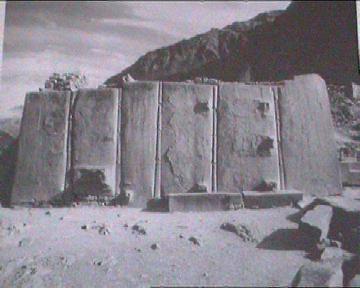
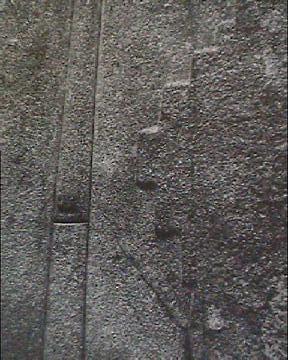
The six Porphyry stones on
Temple hill (above), are some
of the largest at the site, they weigh approximately 50 tons each.
One of the stones has the remains of a 'stepped-lozenge' motif on its
face. When turned horizontally (Photo-Right), the motif is similar to the
Egyptian hieroglyph for 'The Exalted one' or 'God'. The same (horizontal)
motif is found in
Tiahuanaco.
(The Top-50 cut stones of all time)
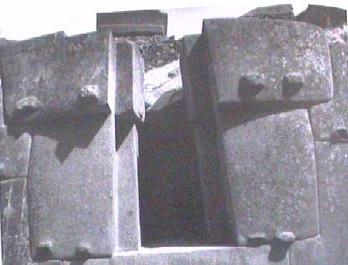
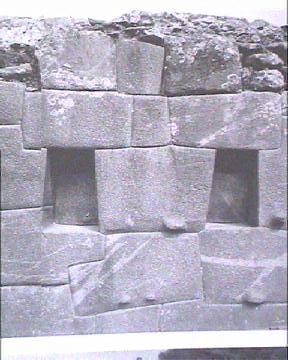
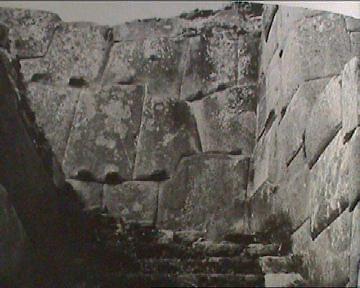
Some examples of the
excellent masonry at Ollantaytambo.
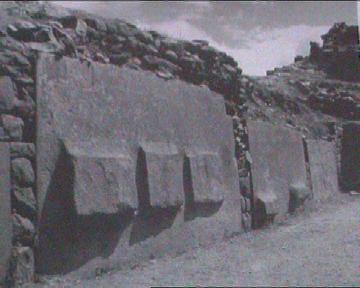
The 'Protuberances' on the stones above and around the
site are the same as those found on stones from ancient Egypt, noticeably at
Giza and Abydoss.
They are commonly
believed to have been used to position the stones, however, at Ollantaytambo
they appear to have become stylised.
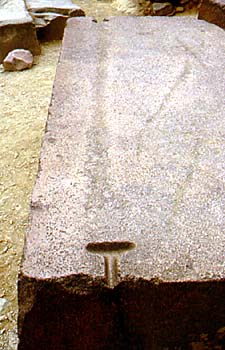
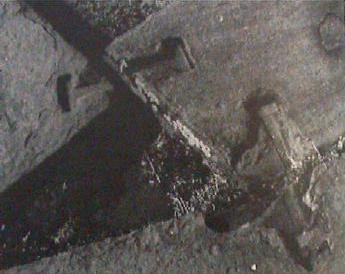
These 'Metal-Ties' were used to secure blocks together. They are a common
construction feature throughout the ancient world, but the ones from
Ollantaytambo (left) are an almost exact match with similar ties found at
Tiahuanaco
(right). This construction feature is also common in Egypt.
|
In the 1930s,
archaeologists came across greenish stones in the ground, under some
structures of Ollantaytambo. It is believed that there
was an older temple, a Coricancha perhaps similar to that at
Cuzco. |
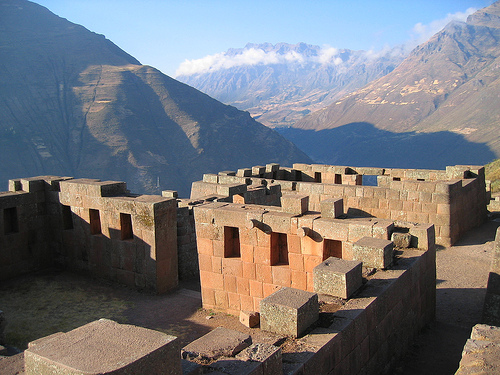
|









